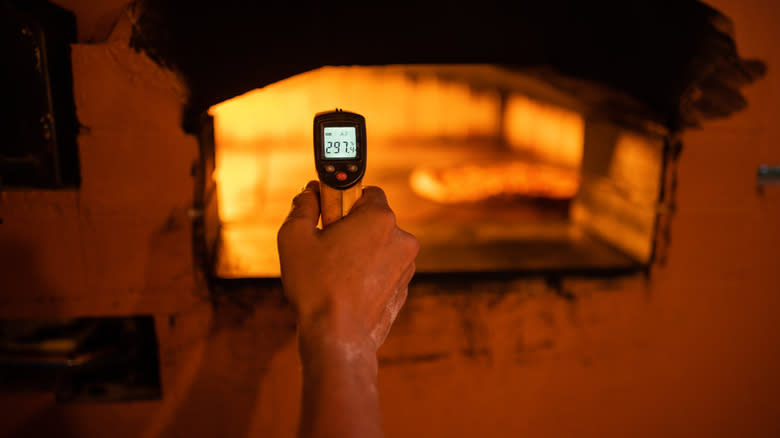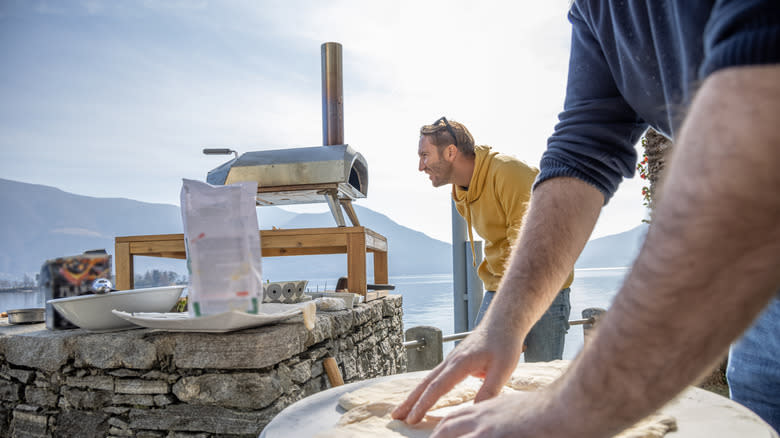How To Safely Test The Temperature Of Your Pizza Oven

When it comes to making pizzas, proper temperature is crucial. You can have the best dough, cheese, and savory or sweet topping ingredients, but if the temperature isn't right, your pizza is doomed. There are a lot of variables affecting the temperature of a pizza oven. Sometimes, it's the oven design — thick stone or brick ovens, for example, take longer to accumulate heat. Outside temperature can also affect the heating process: An oven may fail to reach the ideal temperature on a particularly cold day. It's crucial to test the heat before baking to make sure your pizzas will achieve the desired doneness every time.
One safe and simple way to gauge the temperature is to use an infrared thermometer — a small gun-like device that allows you to read the temperature without touching the oven. Simply point it at the oven's floor and take a reading, then add about 100 degrees Fahrenheit to account for the heat's intensity. To ensure even heating, take several readings from different parts of the oven and adjust the heat distribution accordingly. The perfect temperature can vary based on the pizza type and size but, generally, the oven should be ready at 700 to 1000 degrees Fahrenheit.
Note that not all thermometers are created equal. Some are designed with a higher distance-to-spot (D:S) ratio, allowing you to measure your pizza oven from further away than others. Make sure to check the thermometer's D:S and ensure it works effectively at your preferred distance for accurate readings.
Read more: 30 Popular Frozen Pizzas, Ranked Worst To Best
Testing Pizza Oven Temperature Without An Infrared Thermometer

When you don't have a thermometer at hand, a quick way to check if the oven is ready is to scatter a handful of flour on the bottom. If the flour browns within a few seconds, you can start baking your pizza — perhaps following our margherita pizza recipe. This method requires a lot of practice with trial and error, and your first pizzas may turn out under or overcooked. You will need to recognize the pattern and adjust the temperature accordingly. Besides, the heat is not always the same in different corners of the oven, so there's a chance you'd still end up with unevenly baked pizza.
Another interesting technique is the "Mississippi method," where you place your hand inside the oven and see how long it takes before the heat becomes unbearable. This method requires no tools, but it does come with the risk of potential burns. It also leans a bit too much on your gut (and hand) feeling compared to the straightforward reliability of an infrared thermometer.
Read the original article on Tasting Table.

